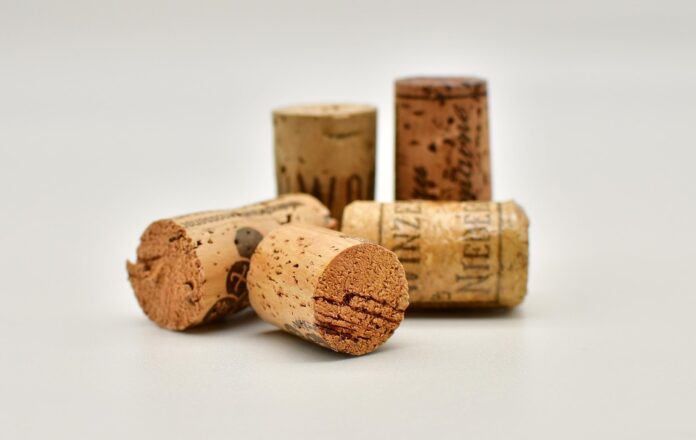Introduction
Low intervention wines have gained popularity in recent years due to their minimal use of additives and manipulation during the winemaking process. These wines are often favored for their natural flavors and expressions of terroir. In this report, we will explore the top 10 low intervention wine brands that are commonly found in restaurants and hospitality establishments.
1. Domaine de la Romanée-Conti
Background
Domaine de la Romanée-Conti is a prestigious winery located in Burgundy, France. Known for producing some of the most sought-after wines in the world, Domaine de la Romanée-Conti practices low intervention winemaking techniques to allow the true character of the grapes to shine through.
Financial Data
The wines from Domaine de la Romanée-Conti command high prices, with some bottles selling for thousands of dollars at top restaurants. Despite their limited production, the winery has a strong global presence and is highly regarded by wine connoisseurs.
2. Clos Rougeard
Background
Clos Rougeard is a family-owned winery in the Loire Valley, France, known for its biodynamic practices and low intervention winemaking. The winery produces highly acclaimed Cabernet Franc wines that showcase the unique terroir of the region.
Industry Insights
Clos Rougeard has been a pioneer in the low intervention wine movement, inspiring other wineries to adopt similar practices. The winery’s commitment to sustainability and natural winemaking has earned it a loyal following among sommeliers and wine enthusiasts.
3. Dirty and Rowdy
Background
Dirty and Rowdy is a California-based winery that specializes in producing low intervention wines from old-vine vineyards. The winery’s unconventional approach to winemaking, including whole cluster fermentation and minimal sulfur use, has garnered critical acclaim.
Financial Data
Despite being a relatively young winery, Dirty and Rowdy has experienced significant growth in recent years. The winery’s wines are in high demand at top restaurants and wine bars, contributing to its success in the competitive California wine market.
4. La Garagista
Background
La Garagista is a small winery located in Vermont, USA, that focuses on producing natural wines using traditional methods. The winery’s commitment to sustainability and organic farming practices sets it apart in the industry.
Industry Insights
La Garagista’s wines have gained a cult following among sommeliers and natural wine enthusiasts for their purity and expression of the Vermont terroir. The winery’s limited production and unique offerings make its wines highly sought after in the market.
5. Gut Oggau
Background
Gut Oggau is an Austrian winery known for its biodynamic farming practices and low intervention winemaking. The winery produces a range of natural wines that reflect the unique characteristics of the Burgenland region.
Financial Data
Gut Oggau’s wines have gained international recognition for their quality and authenticity. The winery has experienced steady growth in sales and distribution, with its wines being featured on top restaurant wine lists around the world.
6. Partida Creus
Background
Partida Creus is a Spanish winery located in the Penedès region that focuses on producing low intervention wines from indigenous grape varieties. The winery’s commitment to minimal intervention and natural winemaking techniques has earned it a strong reputation in the industry.
Industry Insights
Partida Creus’s wines are known for their vibrant flavors and unique expressions of the Mediterranean terroir. The winery’s dedication to sustainability and environmental stewardship has resonated with consumers and critics alike.
7. Matassa
Background
Matassa is a biodynamic winery located in the Roussillon region of France that specializes in producing low intervention wines from old-vine vineyards. The winery’s focus on organic farming and natural winemaking techniques has resulted in wines that are full of character and complexity.
Financial Data
Matassa’s wines have gained a loyal following among sommeliers and natural wine enthusiasts for their purity and expression of the Roussillon terroir. The winery’s limited production and high quality standards have contributed to its success in the competitive French wine market.
8. Broc Cellars
Background
Broc Cellars is a California winery that specializes in producing low intervention wines from organic and sustainable vineyards. The winery’s minimalist approach to winemaking, including native yeast fermentation and minimal sulfur use, results in wines that are true expressions of the grape and terroir.
Industry Insights
Broc Cellars has gained a strong following in the natural wine movement for its innovative winemaking techniques and commitment to sustainability. The winery’s wines are highly sought after by restaurants and wine bars that value authenticity and quality in their wine selections.
9. Frank Cornelissen
Background
Frank Cornelissen is a winemaker based in Sicily, Italy, known for his natural winemaking philosophy and low intervention approach. Cornelissen’s wines are made from organic and biodynamically farmed vineyards, resulting in wines that are pure expressions of the volcanic soils of Mount Etna.
Financial Data
Despite his small production, Frank Cornelissen’s wines have gained a loyal following among wine collectors and enthusiasts. The winemaker’s commitment to quality and authenticity has positioned his wines as some of the most sought-after in the natural wine movement.
10. Testalonga
Background
Testalonga is a South African winery known for its low intervention winemaking techniques and focus on producing natural wines from old-vine vineyards. The winery’s commitment to organic farming and minimal intervention results in wines that are vibrant and expressive of the Swartland terroir.
Industry Insights
Testalonga’s wines have gained recognition for their unique flavors and sense of place. The winery’s dedication to sustainability and environmental responsibility has resonated with consumers and critics alike, positioning Testalonga as a leader in the South African natural wine scene.
In conclusion, the top 10 low intervention wine brands highlighted in this report are setting the standard for quality and authenticity in the wine industry. These wineries’ commitment to sustainable farming practices, minimal intervention winemaking, and unique expressions of terroir have earned them a loyal following among sommeliers, wine enthusiasts, and restaurant professionals. As the demand for natural wines continues to grow, these brands are well-positioned to lead the way in the low intervention wine movement.




